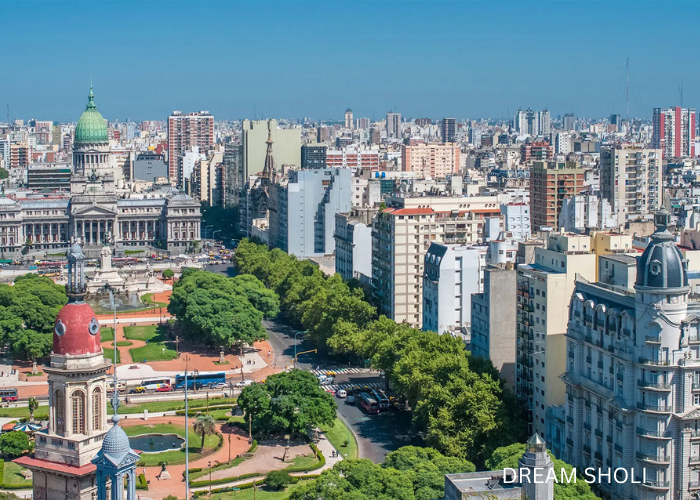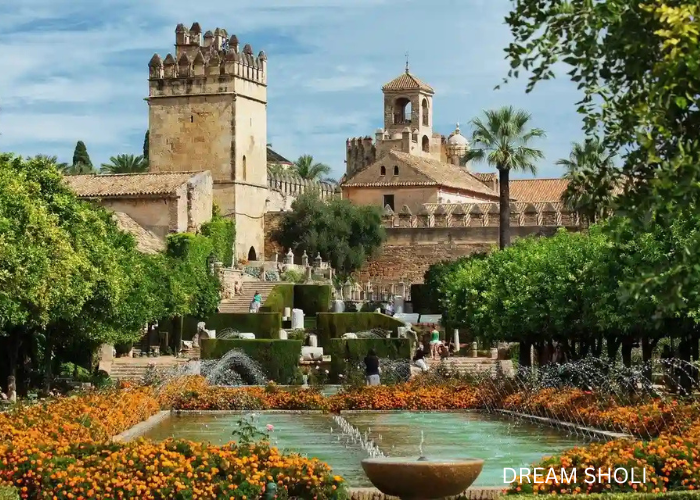
It is the eighth largest country in the world and offers an impressive array of attractions, both cultural and natural. The country is deeply rooted in a rich cultural heritage, and one of its most celebrated contributions to the world is the passionate and dramatic tango, a dance and musical style that originated in the bustling streets and neighborhoods of Buenos Aires. The capital city, Buenos Aires, is not only known for its vibrant tango scene but also for its lively atmosphere, historical architecture, and thriving arts and culinary scenes, making it a dynamic hub for cultural exploration. Argentina’s natural beauty is equally remarkable, featuring a diverse range of landscapes that stretch from north to south. One of its most iconic natural wonders is the awe-inspiring Iguazu Falls, located on the border with Brazil. This vast and powerful series of waterfalls is a UNESCO World Heritage site and a must-see for nature lovers. In the western part of the country, the Andes Mountains form a majestic backdrop, providing opportunities for hiking, skiing, and mountaineering. In contrast, the Pampas plains to the east offer expansive, flat landscapes that are crucial to the country’s agriculture, particularly in cattle farming. From Patagonia’s icy wilderness to the tropical forests in the north, Argentina is a land of stunning contrasts. Argentine cuisine is another highlight of the country, with its world-famous beef taking center stage. Known for its exceptional quality and flavor, Argentine steak is revered globally, and it is commonly prepared asado (barbecue) style, where various cuts of meat are slow-cooked over an open flame. Argentina’s wine regions, especially Mendoza, produce some of the finest wines in the world, offering a variety of reds, particularly Malbec, that are highly regarded both domestically and internationally. The combination of superb food and wine, along with Argentina’s vibrant culture and breathtaking landscapes, makes it an ideal destination for travelers seeking a well-rounded and enriching experience.
Argentina’s vast size and diverse geography result in a wide range of climates across the country, meaning that the weather can vary significantly depending on where you are. As is typical in many Southern Hemisphere nations, Argentina experiences four distinct seasons, with each region offering different weather patterns. In Buenos Aires, the capital city, the climate is classified as humid subtropical, characterized by hot, humid summers and mild, moderate winters, making it a popular destination year-round. However, temperatures can rise considerably in the summer months, so visitors should be prepared for heat.
In contrast, the weather in the Andes Mountains, which runs along the western border, can be much colder, especially at higher altitudes. Winters in the Andean region can be particularly frigid, with heavy snowfalls in certain areas, making it an ideal location for winter sports such as skiing and snowboarding.

Argentina’s culinary culture is deeply intertwined with the country’s diverse influences and rich traditions, creating a vibrant gastronomic identity. One of the most iconic dishes in Argentina is “asado,” a traditional barbecue that involves grilling various cuts of meat, such as beef, chorizo (sausage), and morcilla (blood sausage). This social and communal event is more than just a meal – it’s a central part of Argentine culture, where families and friends gather around the grill to share good food and conversation. Asado reflects the nation’s love for beef, as Argentina is renowned for producing some of the highest-quality meat in the world. Argentina’s culture, including its food, is significantly shaped by European influences, particularly from Italy and Spain. This is reflected not only in the cuisine but also in the country’s language, architecture, and daily life. The Italian influence can be seen in the widespread love for pasta and pizza, while Spanish heritage is evident in the language and many traditional customs. Another cornerstone of Argentine culture is the tango – a passionate and expressive dance and music genre that originated in Buenos Aires. Argentina is also known for its vibrant art, literature, and football (soccer) culture, all of which play a vital role in shaping the country’s national identity and social life. Football, in particular, is a source of immense pride, with Argentina being home to some of the world’s most legendary players and fervent fans.


Buenos Aires, the vibrant capital of Argentina, is a dynamic metropolis known for its rich cultural heritage, captivating history, and striking architecture. The city is an exciting blend of old-world charm and modern vitality, offering visitors a wealth of experiences. You can immerse yourself in the artistic heart of the city by wandering through the colorful streets of La Boca, famous for its colorful buildings, tango dancers, and vibrant murals. The cobblestone lanes of San Telmo offer a glimpse into Buenos Aires’ past with its charming colonial-era architecture, antique shops, and lively tango performances. The city’s diverse neighborhoods are teeming with art galleries, cultural venues, and eclectic markets, ensuring that there’s always something new to discover. No visit to Buenos Aires would be complete without savoring the renowned Argentine cuisine, with local dishes like “asado” (barbecue), empanadas, and the sweet indulgence of “dulce de leche” treats. The city also boasts a thriving nightlife scene, with tango shows being one of the most iconic forms of entertainment. These performances, often staged in intimate venues, allow visitors to witness the passionate and elegant dance that Buenos Aires is famous for. From lively street markets to sophisticated dining experiences, Buenos Aires offers something for every type of traveler. The city is well-connected to the rest of the world through Buenos Aires International Airport, officially known as Ministro Pistarini International Airport (Ezeiza). Situated approximately 22 kilometers south of the city center, this major international gateway serves as the primary hub for both domestic and international flights. As one of Argentina’s busiest airports, Ministro Pistarini offers a wide range of services, including shops, restaurants, lounges, and transportation options that make traveling to and from the city convenient. Whether you’re arriving for business, leisure, or a cultural adventure, this airport is the ideal starting point for exploring the many wonders of Buenos Aires.


For those who appreciate the outdoors, Córdoba is surrounded by breathtaking mountains and valleys that provide excellent opportunities for hiking, horseback riding, and nature excursions. The nearby Sierras de Córdoba offer picturesque landscapes, with tranquil rivers, lush forests, and diverse wildlife, making it a great destination for outdoor enthusiasts looking to escape into nature. The city’s scenic beauty is complemented by a vibrant cultural scene, which includes festivals, art galleries, and performances throughout the year.
Córdoba’s main airport, Ingeniero Aeronáutico Ambrosio L.V. Taravella International Airport, located at Av. La Voz del Interior 8500, provides convenient access to the city. The airport serves as a vital hub for both domestic and international flights, connecting Córdoba to various destinations within Argentina and abroad. Travelers passing through can enjoy a range of amenities, including a meal at the Hard Rock Café, a popular spot for passengers before their departure. The airport’s efficient services and proximity to the city center make it a key gateway for visitors coming to explore Córdoba’s cultural and natural treasures.
Bariloche, located in the picturesque Argentine Patagonia region, is renowned for its breathtaking natural surroundings. Surrounded by majestic mountains, pristine lakes, and expansive forests, the town offers a wealth of outdoor activities, including hiking, skiing, and a variety of water sports. Its stunning landscapes make it a popular destination for nature lovers and adventure enthusiasts alike. Bariloche is also famous for its rich tradition of chocolate making, so visitors should not miss the opportunity to sample some of the town’s renowned chocolates, which are considered among the best in Argentina.
The town is served by Governor Edgardo Castello Airport, also known as San Carlos de Bariloche Airport, which is located about 13 kilometers from the town center. The airport is an important transportation hub, handling both domestic and international flights, and connecting Bariloche to major cities within Argentina and select international destinations. The airport offers a variety of amenities to ensure a comfortable travel experience, including shops, restaurants, and car rental services. Whether arriving or departing, travelers will find the facilities convenient for both short and long stays in this scenic part of Argentina.


Explore the world effortlessly with our tailored travel packages. Let us handle the details while you create unforgettable memories.
Copyright 2024 Dream Sholi